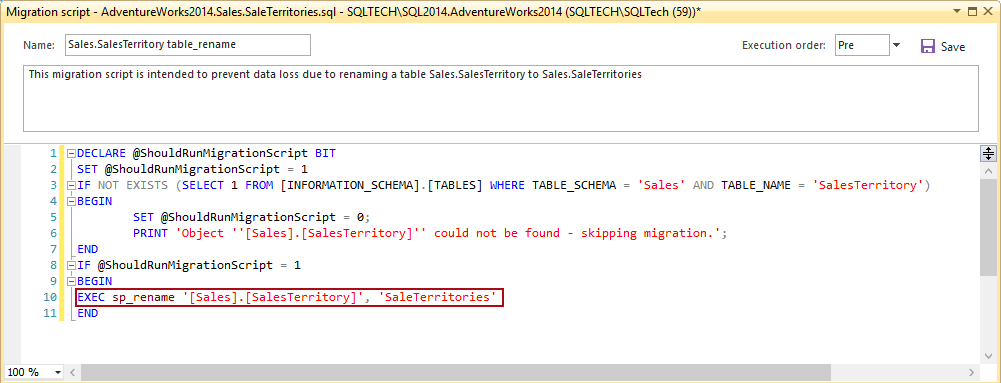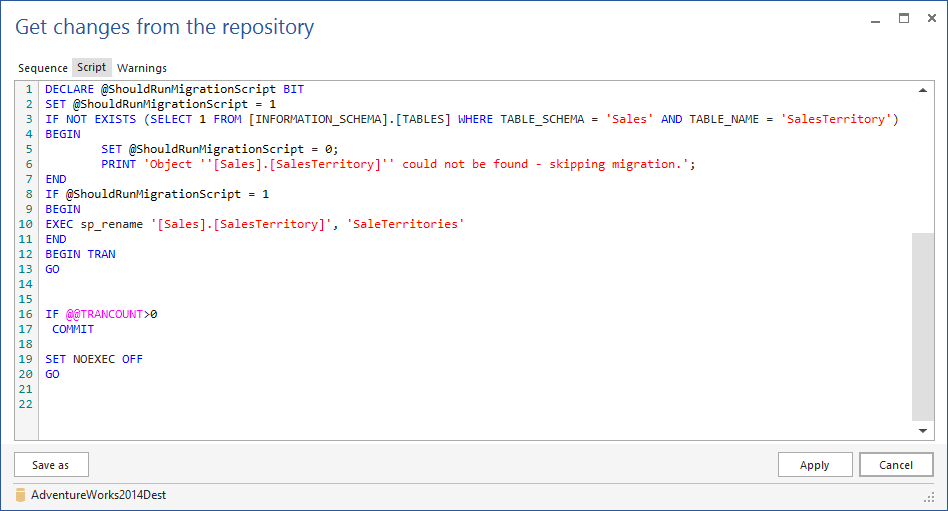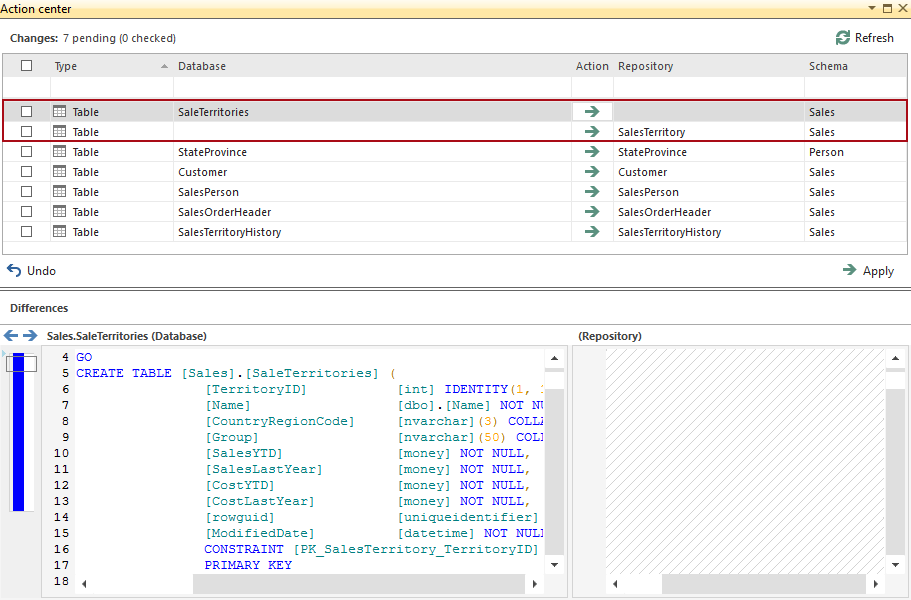Imagine you have a vast amount of data that needs to be transferred from one system to another seamlessly. Sounds overwhelming, right? Well, fear not! In this article, we will explore the world of data migration scripts, a powerful tool that simplifies the process of moving your data from one place to another. Whether you are a tech-savvy professional or a curious individual looking to expand your knowledge, this article will provide you with a comprehensive understanding of data migration scripts and their effectiveness in streamlining the complex task of data migration. So, let’s get started!https://www.youtube.com/embed/8cG-xrfWIKQ
Overview of Data Migration Scripts
Definition
Data migration scripts are a set of instructions or code snippets that facilitate the transfer of data from one system to another. These scripts are essential when it comes to migrating data smoothly and efficiently. They automate and streamline the data migration process, ensuring data integrity and accuracy throughout the transfer.
Importance
Data migration is a critical process for organizations that are upgrading their systems, undergoing mergers or acquisitions, or transitioning to new platforms. Smooth and successful data migration is essential for maintaining business operations and avoiding data loss. Data migration scripts play a crucial role in ensuring a seamless transfer of data, minimizing downtime, and minimizing the risk of data loss or corruption.
Types of Data Migration Scripts
There are various types of data migration scripts, depending on the specific requirements and systems involved in the migration process. Some common types include:
- Database migration scripts: These scripts are designed to migrate data from one database system to another. They handle tasks such as schema creation, table creation, data mapping, and data transformation.
- ETL scripts: Extract, Transform, Load (ETL) scripts are used to extract data from one or more sources, transform it into a suitable format, and load it into the target system. ETL scripts enable data cleansing, data mapping, and data validation during the migration process.
- Migration scripts for cloud services: When migrating data to cloud-based platforms, specific scripts are often required to handle the unique characteristics and requirements of cloud services. These scripts address aspects such as data security, scalability, and integration with cloud-based APIs.
- Scripting languages for data migration: General-purpose scripting languages such as Python, Ruby, or PowerShell can be used to write data migration scripts. These languages provide a flexible and powerful environment for handling complex data migration tasks.
Key Considerations for Data Migration Scripts
Data Analysis
Before developing data migration scripts, it’s crucial to conduct a thorough analysis of the data. This analysis involves understanding the structure, format, and quality of the data in the source system. By identifying any inconsistencies or anomalies, you can ensure that appropriate data transformation and mapping processes are put in place.
Data Mapping
Data mapping is a critical step in data migration. It involves defining the relationships between data elements in the source and target systems. Data mapping ensures that data is transferred accurately and consistently, maintaining its integrity and coherence. Data migration scripts must include robust data mapping logic to handle complex mappings and transformations.
Validation and Testing
Validating and testing data migration scripts is essential to ensure the accuracy and reliability of the migration process. It involves verifying the integrity of the data before and after migration, performing end-to-end tests, and validating the consistency of the migrated data. Comprehensive testing helps identify any issues or discrepancies, allowing for timely resolution before the migration is completed.
Data Security
Data security should be a top priority when developing data migration scripts. The scripts should include measures to protect sensitive data during transit and at rest. Encryption techniques, access control mechanisms, and secure communication protocols should be incorporated into the scripts to ensure the confidentiality and integrity of the data.

Common Challenges in Data Migration
Data Compatibility
One of the significant challenges in data migration is ensuring compatibility between the source and target systems. Differences in data formats, field lengths, and encoding can lead to data corruption or loss if not addressed properly in the migration scripts. It’s essential to conduct thorough compatibility checks and implement data transformation logic to handle any discrepancies.
Data Loss
Data loss is a significant risk during the data migration process. Inadequate backup strategies, errors in the migration scripts, or unforeseen technical issues can result in the loss of critical data. Proper testing, validation, and backup practices must be implemented to minimize the risk of data loss during migration.
Downtime
Data migration often requires a temporary disruption of business operations, leading to downtime. Minimizing downtime is crucial to ensure continuity and avoid financial losses. Well-designed data migration scripts should minimize the duration of downtime by optimizing the migration process and reducing the time required for data transfer.
Data Quality
Maintaining data quality during data migration is a challenge, especially when dealing with large volumes of data. Incomplete or inaccurate data can lead to significant issues in the target system and impact business processes. Data migration scripts should include data validation and cleaning routines to ensure data quality is preserved throughout the migration process.
Best Practices for Data Migration Scripts
Planning and Documentation
Thorough planning and documentation are crucial for successful data migration. It’s essential to define clear objectives, identify data dependencies, and document the migration process. This documentation serves as a reference and helps ensure that all stakeholders are aligned on the migration strategy.
Incremental Migration
Rather than attempting to migrate all data at once, it is often beneficial to adopt an incremental approach. Incremental migration involves migrating data in smaller batches, allowing for easier tracking and error identification. This approach reduces the risk of data loss and provides opportunities for testing and validation throughout the migration process.
Error Handling and Logging
Robust error handling mechanisms and comprehensive logging are vital components of data migration scripts. These features help identify and resolve issues encountered during the migration process. Detailed error logs facilitate troubleshooting and provide insights for improving script performance and data quality.
Backup and Rollback Strategies
Implementing reliable backup and rollback strategies is essential to mitigate the risk of data loss or corruption. Regular backups of both the source and target systems should be performed before and during the migration process. This allows for quick restoration in case of any unforeseen issues or errors.
Performance Optimization
Data migration scripts should be optimized for performance to minimize the duration of the migration process. Techniques such as parallel processing, caching, and data compression can significantly improve the speed and efficiency of data transfer. Regular monitoring and optimization of the scripts can help identify any bottlenecks or performance issues.

Popular Data Migration Tools and Frameworks
ETL (Extract, Transform, Load) Tools
ETL tools are widely used in data migration due to their ability to extract data from various sources, transform it, and load it into the target system. Popular ETL tools include Informatica PowerCenter, Microsoft SQL Server Integration Services (SSIS), and Talend.
Scripting Languages
General-purpose scripting languages such as Python, Ruby, and PowerShell are commonly used to develop data migration scripts. These languages provide flexibility and power when handling complex data migration requirements.
Cloud Migration Services
As more organizations migrate their data to the cloud, specialized cloud migration services have emerged to facilitate the process. Providers like Amazon Web Services (AWS) and Microsoft Azure offer cloud-specific migration tools and services that simplify and streamline data migration to their respective platforms.
Database Migration Frameworks
Database-specific migration frameworks, such as Flyway and Liquibase, provide a comprehensive set of tools and libraries for database schema versioning and migration. These frameworks automate the process of migrating databases, ensuring consistency and integrity throughout the migration.
Steps to Develop an Effective Data Migration Script
Identify Source and Destination Systems
The first step in developing a data migration script is to identify the source and destination systems. Understanding the structure, format, and characteristics of both systems is essential for designing effective migration strategies.
Analyze Data Requirements
Thoroughly analyzing data requirements involves identifying the specific data elements that need to be migrated, ensuring data compatibility between the source and target systems, and addressing any transformation or cleansing needs.
Design the Data Mapping
Designing the data mapping involves defining the relationships and transformations between data elements in the source and target systems. This step ensures that data is migrated accurately and consistently.
Develop the Migration Scripts
Using the information gathered during the analysis and design phases, the migration scripts can now be developed. This involves writing code or using specialized tools to automate the data migration process.
Test and Validate the Scripts
Before executing the migration, it’s crucial to thoroughly test and validate the scripts. This includes performing data integrity checks, simulating the migration process, and validating the consistency and accuracy of the migrated data.
Execute the Migration
Once the scripts have been tested and validated, the migration process can be executed. It’s essential to closely monitor the migration process, address any issues that arise, and ensure the successful transfer of data.
Monitor and Troubleshoot
During the migration process, it’s important to continuously monitor the progress and performance of the scripts. This enables quick identification and resolution of any issues or errors that may arise.
Document the Migration Process
Documenting the migration process is crucial for future reference and knowledge sharing. This documentation should include details such as the migration strategy, scripts used, data mapping logic, and any issues or challenges encountered during the migration.

Data Migration Script Case Studies
Migrating from On-Premises to Cloud
A common case study involves migrating data from an on-premises system to a cloud-based platform. Migrating to the cloud offers various benefits, such as scalability, cost savings, and enhanced accessibility. Data migration scripts in this case study would involve extracting data from the on-premises system, transforming it to meet the requirements of the cloud platform, and loading it into the cloud-based database.
Upgrading Database Versions
When upgrading database versions, data migration scripts are essential to ensure a seamless transfer of data. These scripts handle tasks such as updating the database schema, transforming data to match the new schema, and migrating data from the old version to the new one.
Consolidating Data from Multiple Systems
In scenarios where an organization is consolidating data from multiple systems, data migration scripts play a pivotal role in combining and integrating the data. These scripts handle data extraction, transformation, and loading from each source system to the consolidated target system.
Benefits of Using Data Migration Scripts
Efficiency and Automation
Data migration scripts automate the migration process, reducing the need for manual intervention and streamlining the transfer of data. This automation improves efficiency and minimizes the time required for migration.
Consistency and Accuracy
Data migration scripts ensure consistency and accuracy by applying predefined rules and transformations to the data. This minimizes the risk of human error and ensures that the migrated data retains its quality and integrity.
Reduced Downtime and Disruptions
By automating the data migration process, scripts help minimize downtime and disruptions to business operations. This is particularly important when migrating critical systems or handling large volumes of data.
Cost Savings
Using data migration scripts can result in cost savings by reducing the need for manual data entry, minimizing downtime, and avoiding potential errors or data loss. Automating the migration process increases productivity and efficiency, leading to cost-effective data migration.

Future Trends in Data Migration Scripting
Machine Learning and AI Integration
As machine learning and artificial intelligence technologies continue to advance, they have the potential to revolutionize data migration. Integrating these technologies with data migration scripts can enable intelligent data transformation, automatic data mapping, and real-time analytics during the migration process.
Real-time Data Migration
Real-time data migration is becoming increasingly important as organizations demand up-to-date and synchronized data across multiple systems. Future data migration scripts are likely to incorporate real-time data replication and synchronization techniques to ensure data consistency in decentralized environments.
Data Governance and Compliance
With the growing concerns surrounding data governance and compliance, future data migration scripts will need to incorporate robust security and privacy measures. Scripts will need to handle data anonymization, encryption, and access controls to ensure compliance with various regulations such as GDPR and CCPA.
Integration with DevOps Processes
As organizations adopt DevOps practices, data migration scripts will need to integrate seamlessly with continuous integration and deployment pipelines. This integration will enable streamlined and automated data migration processes, ensuring consistency and continuous delivery of data updates.
Conclusion
Data migration scripts are essential tools for organizations undergoing system upgrades, migrations, or consolidations. They automate and streamline the data migration process, ensuring data integrity, accuracy, and security. By considering key factors such as data analysis, data mapping, validation, and testing, organizations can develop highly effective migration scripts that minimize risks and disruptions. With the right tools, frameworks, and best practices, data migration can be a smooth and efficient process, paving the way for successful system transitions and data integration.

Leave a Reply